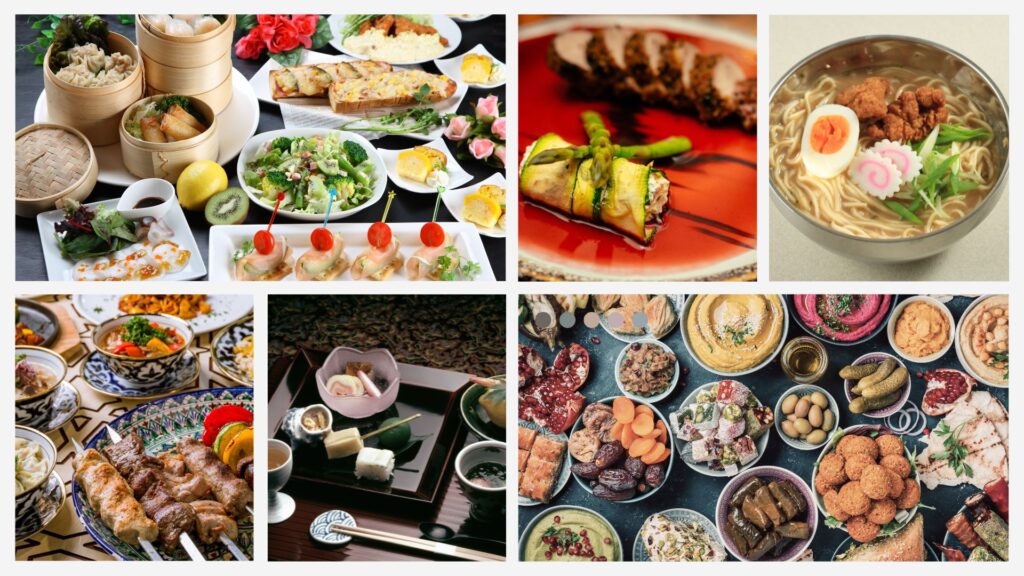Hello, health enthusiasts and eco-conscious eaters! Have you ever considered the impact your fork has on the planet or pondered how swapping steak for spinach could boost your health and help heal the Earth? If so, you’re in the right place. Embarking on a plant-based journey can initially seem daunting, but fear not! This guide is your friendly companion through the lush fields of plant-based eating, offering tips, encouragement, and a sprinkle of humor to lighten the way. Whether you’re a curious omnivore, a flexitarian looking to lean more into plants, or someone who’s watched one too many documentaries on food systems, let’s dive into the delicious world of plant-based eating together. Are you ready to leave the old you behind? Let’s grow!
Why Go Plant-Based?
Before we get into the “how,” let’s discuss the “why.” Plant-based diets are skyrocketing in popularity and for good reasons. They’re linked to a plethora of health benefits, including lower risks of heart disease, hypertension, type 2 diabetes, and certain cancers. Plus, they’re kinder to our planet, reducing your carbon footprint and saving gallons of water every day. And let’s not forget the animals; a plant-based diet means fewer furry or feathered friends on your conscience and your plate.
First Steps in the Garden of Eating
Embarking on a plant-based journey is like setting foot in a lush, unexplored garden—it’s all about taking those first steps with curiosity and a willingness to learn. Transitioning to a plant-based diet doesn’t have to be a leap into the unknown; rather, it can be a gradual path paved with tasty discoveries and small, meaningful changes. Let’s break down how to navigate these initial steps in your garden of eating.
Meatless Mondays: A fantastic way to dip your toes into plant-based waters is by dedicating one day a week to entirely plant-based meals. Meatless Monday is a global movement that encourages people to eat plant-based meals at the start of the week. It’s a simple commitment that can have a significant impact over time, allowing you to experiment with plant-based recipes and discover new favorite dishes without overwhelming yourself.
Swap It Out: Look at the meals you love and see where you can make plant-based swaps. Love burgers? Try a lentil or black bean burger. Can’t you live without milk in your morning coffee? Explore the wide variety of plant-based milks like almond, soy, oat, or cashew. These swaps let you maintain the comfort of familiar foods while gently nudging your diet in a greener direction.
Veggie-Load Your Plate: Make vegetables the stars of your meals. Begin by filling half your plate with a colorful array of vegetables. This not only ensures you’re getting a broad spectrum of vitamins, minerals, and antioxidants but also naturally reduces the space on your plate for animal products. Explore different cooking methods—roast, sauté, grill, or steam—to find what brings out the best in each vegetable.
Start Small with Snacks: Snacking is an easy way to incorporate more plant-based foods. Swap out chips for carrot sticks and hummus, or try making a trail mix with nuts and dried fruits. These small changes can add up, helping to shift your overall dietary pattern toward more plant-based choices.
Educate yourself: Knowledge is power, especially when venturing into new territory. Read books, watch documentaries, and follow plant-based nutrition blogs to understand the why and how of plant-based eating. Learning about the health benefits, environmental impact, and ethical considerations can provide motivation and context for your journey.
Be patient and kind to yourself. Transitioning to a plant-based diet is a process, and it’s okay to take it one step at a time. There might be days when you find it challenging, and that’s perfectly normal. The key is to be patient and compassionate with yourself as you navigate this change. Celebrate your victories, learn from the hiccups, and remember why you started on this path.
“First Steps in the Garden of Eating” is about exploring, learning, and growing. By taking these initial steps, you’re not just changing your diet; you’re planting the seeds for a healthier, more sustainable lifestyle. So, take a deep breath, grab a basket, and let’s start picking some delicious, plant-based choices together.
Stocking Your Plant-Based Pantry
Having a well-stocked pantry is like having a treasure chest in your kitchen, especially when embarking on a plant-based journey. It’s about ensuring you have a variety of versatile, nutritious ingredients at your fingertips, ready to transform into delicious, nourishing meals. Let’s delve into the essentials that make up the foundation of a plant-based pantry and explore why each component is crucial.
Legumes: The Plant-Based Powerhouses
Legumes, including beans, lentils, and chickpeas, are the backbone of many plant-based diets. They are incredibly rich in protein, making them an excellent alternative to meat. But their benefits don’t stop there; they’re also packed with fiber, vitamins, and minerals that support overall health. The versatility of legumes means they can be turned into anything from hearty stews and soups to salads, spreads, and even meat-free burgers. Keeping a variety of canned or dried legumes in your pantry ensures you’re always ready to add substance and nutrition to your meals.

Whole Grains: More than Just Filler
Whole grains like quinoa, brown rice, and oats are more than just side dishes; they are nutritious staples that can be the main event of any meal. Quinoa, for example, is a complete protein, containing all nine essential amino acids, and is also gluten-free. Brown rice is rich in magnesium, and oats are known for their heart-healthy soluble fiber. Whole grains provide the energy and satiety needed to fuel your day, and their dietary fiber is essential for digestive health. Incorporating a variety of whole grains into your diet adds depth and texture to your meals while packing a nutritional punch.
Nuts and Seeds: Small but Mighty
Nuts and seeds, including almonds, chia seeds, and flaxseeds, are small but mighty additions to the plant-based pantry. They are dense in nutrients, offering healthy fats, proteins, vitamins, and minerals. Almonds are a great source of Vitamin E and magnesium, while chia seeds and flaxseeds are rich in omega-3 fatty acids, crucial for heart health and reducing inflammation. These tiny powerhouses can be sprinkled on salads, blended into smoothies, or incorporated into baked goods, providing a nutritional boost and a satisfying crunch.
Spices and Herbs: The Flavor Magicians
The magic of plant-based cooking often lies in the use of spices and herbs. They are the secret ingredients that can take a dish from bland to grand without the need for excessive salt or fat. Fresh or dried, spices and herbs can transform simple ingredients into vibrant, flavorful creations. From the warmth of cinnamon in oatmeal to the brightness of basil in a tomato sauce, having a well-stocked spice rack allows you to explore global cuisines and add diversity to your diet. They not only enhance flavor but also offer health benefits, including anti-inflammatory and antioxidant properties.
A plant-based pantry stocked with these essentials serves as a launching pad for endless culinary adventures. It empowers you to create meals that are not only nutritious and sustainable but also delicious and satisfying. By building meals around legumes, whole grains, nuts, seeds, spices, and herbs, you’re setting the stage for a plant-based diet that nourishes the body, delights the senses, and respects the planet. So, take a moment to inventory your pantry, stock up on these essentials, and get ready to enjoy the abundant flavors and benefits of plant-based eating.
Plant-Based Protein: Debunking the Myth
The myth that a plant-based diet can’t adequately provide protein is one of the most persistent misconceptions out there. Yet, the truth is, that the plant kingdom is brimming with rich protein sources, ready to nourish your body and support your health and fitness goals. Let’s dive into the vibrant world of plant-based proteins and debunk this myth once and for all.
Lentils and Beans: These leguminous powerhouses are not only rich in protein but also fiber, iron, and folate, making them an excellent cornerstone for any plant-based meal. Whether you’re whipping up a comforting lentil soup, a hearty bean chili, or a refreshing bean salad, these ingredients offer versatility and depth to your cooking while packing a significant protein punch.
Tofu and Tempeh: Made from soybeans, tofu and tempeh are staple proteins in many vegetarian and vegan diets. Tofu’s mild flavor and adaptable texture make it a fantastic addition to everything from stir-fries to smoothies, absorbing flavors beautifully. Tempeh, with its nutty taste and firmer texture, is excellent in sandwiches, salads, or as a meat substitute in a variety of dishes. Both are not only high in protein but also contain all nine essential amino acids, making them complete proteins.
Edamame: These young, green soybeans are a fun, protein-rich snack or side dish that’s loaded with fiber and vitamins. Boiled or steamed and sprinkled with a pinch of salt, edamame can be a delightful appetizer or a great addition to salads and bowls.
Vegetables: While often overlooked as protein sources, many vegetables contribute to your daily protein intake. Spinach, broccoli, asparagus, and Brussels sprouts, among others, contain higher levels of protein than most people realize. Integrating a variety of these protein-rich vegetables into your meals can boost your overall nutrient intake.
Experimentation is Key: The beauty of plant-based proteins lies in their versatility. Experimenting with these ingredients can lead to discovering new favorite dishes and innovative ways to include more protein in your diet. From blending silken tofu into creamy sauces to adding lentils to your tacos, the possibilities are endless.
By exploring and incorporating these plant-based proteins into your diet, you can easily meet and even exceed your protein needs. This not only challenges the myth that plant-based eating lacks sufficient protein but also opens up a world of culinary creativity and health benefits. Whether you’re a seasoned plant-based eater or just starting to explore this lifestyle, remember that a wide array of protein-rich foods is available to fuel your body and delight your taste buds.
Getting Creative in the Kitchen
Embarking on a plant-based diet is much like becoming an artist in your kitchen, with fruits, vegetables, legumes, and grains as your palette and your plate as the canvas. This journey into plant-based eating is not just about nutrition and sustainability; it’s a doorway to a world brimming with culinary creativity and exploration. Here’s why diving into this vibrant culinary world can be one of the most enjoyable and rewarding adventures.
New Recipes Await: Every meal is an opportunity to try something new. Plant-based cooking encourages you to look beyond traditional dishes and explore global cuisines, many of which are rich in plant-based options. From the spicy curries of India to the hearty stews of Africa, there’s a vast world of flavors waiting to be discovered. Online platforms, cookbooks, and blogs are treasure troves of recipes that cater to all levels of cooking skills, promising something new for every meal.

Unfamiliar Ingredients, Uncharted Flavors: Plant-based eating invites you to broaden your culinary horizons by experimenting with ingredients you may have never heard of before. Ever cooked with jackfruit, tempeh, or nutritional yeast? These and many other plant-based staples can open up new dimensions of flavor and texture in your cooking. Each unfamiliar ingredient is a chance to learn, taste, and personalize your approach to plant-based eating.
Embrace the Experimentation: Not every kitchen experiment is going to turn out as expected, but that’s part of the fun. A dish that didn’t quite hit the mark is not a failure; it’s a step in your culinary journey. It’s an opportunity to learn what works and what doesn’t, to adjust, and to try again. With each attempt, you’ll gain confidence, skills, and a deeper understanding of plant-based cooking.
Cooking as a Reflection of You: One of the most beautiful aspects of cooking, particularly within the plant-based realm, is the ability to make each dish uniquely yours. Your choice of spices, the way you like your vegetables cooked or even your preferred plant-based protein—these preferences allow you to express your individuality through food. Cooking becomes a form of self-expression, a creative outlet that nourishes both the body and the soul.
The Joy of Cooking: At its heart, cooking should be a joyful process. It’s a break from the routine, a tactile and sensory experience that can be both meditative and exhilarating. Plant-based cooking, with its emphasis on freshness, color, and variety, can reinvigorate your love for cooking. It invites you to be present, to savor the colors, textures, and aromas, and to celebrate the act of creating something nourishing and beautiful.
In essence, plant-based eating is not just a dietary choice—it’s a celebration of food, of life, and of our planet. It encourages us to engage with what we eat more consciously and creatively, transforming mealtime into an adventure. So, grab your apron, open your mind and your cookbook, and let the culinary creativity flow. Who knows what delicious discoveries await you on your plant-based journey?
Navigating Social Settings
Navigating a plant-based lifestyle in a predominantly meat-centric culture presents its own unique set of challenges, particularly when it comes to social gatherings and dining out. However, with a bit of preparation and open communication, you can enjoy social settings without compromising your dietary choices. Here are strategies to gracefully maintain your plant-based diet and perhaps even inspire others along the way.
Bring a Dish
One of the most effective ways to ensure you’ll have something to eat at a social event is to bring a dish to share. This approach serves multiple purposes: it guarantees you’ll have at least one plant-based option, introduces others to how delicious plant-based food can be, and contributes to the communal spirit of sharing meals. Choose a crowd-pleaser that’s easily scalable, like a hearty vegan chili, a vibrant salad packed with fresh veggies and grains, or a tempting plant-based dessert. This not only showcases the variety and flavor of plant-based cooking but might also spark curiosity and conversations about your dietary choices.
Scout the Menu
Before dining out, take a few minutes to review the restaurant’s menu online. Many establishments now offer plant-based options or dishes that can be easily modified. If the menu isn’t clear, don’t hesitate to call ahead and ask about plant-based options. This preparation allows you to enjoy your dining experience without the stress of navigating the menu on the spot. Plus, it signals to restaurants that there’s demand for plant-based dishes, encouraging them to include more options.
Communicate Your Preferences
Whether you’re a guest at a dinner party or ordering at a restaurant, clear communication about your dietary preferences is key. When invited to someone’s home, gently inform your host of your plant-based diet ahead of time. Most hosts appreciate knowing this in advance and can accommodate your needs. Similarly, when dining out, communicate your preferences to your server. Be specific about what you do and don’t eat, and ask for recommendations. Most restaurants are willing to accommodate dietary preferences, and some chefs enjoy the creative challenge of crafting a plant-based meal.
These strategies are about more than just finding something to eat; they’re about participating fully in social experiences while honoring your commitment to plant-based living. By bringing a dish, you’re sharing a part of your world. By scouting the menu, you’re engaging with businesses in a way that encourages more plant-based options. And by communicating your preferences, you’re advocating for your needs and, potentially, for the needs of others in the future.
Eating plant-based in a meat-loving world can indeed be challenging, but it’s also an opportunity to lead by example, to educate, and to show that plant-based eating is not only viable but also enjoyable and fulfilling. With these strategies in hand, you can navigate social settings with confidence, knowing that you’re staying true to your values while still enjoying the company of friends and family.
Listening to Your Body
Transitioning to a plant-based diet is a significant and positive change, one that can bring numerous health benefits. However, like any dietary shift, it’s essential to tune into your body’s responses and adjust accordingly to maintain balance and ensure you’re meeting all your nutritional needs. Here’s a deeper look into why monitoring your body’s reaction is crucial during this transition and how consulting a nutritionist can be incredibly beneficial.
Tuning Into Your Body’s Signals
Embarking on a plant-based journey involves more than just cutting out animal products; it’s about finding a new equilibrium in your diet. Initially, you might experience changes in energy levels, digestion, or even mood—all signals from your body as it adapts to different sources of nutrition. Some people report feeling more energized and lighter, while others may need time to adjust.
Key nutrients are protein, iron, calcium, vitamin B12, and omega-3 fatty acids. While plentiful in a well-planned plant-based diet, their sources differ from those in a diet that includes animal products. For instance, you might need to consume larger volumes of certain foods or combine foods strategically (like beans and rice) to achieve complete protein profiles.
Nutritional Tweaking
If you notice persistent fatigue, mood changes, or other signs that might indicate nutrient deficiencies, it might be time to tweak your food choices. This doesn’t mean your diet isn’t working—rather, it’s an invitation to explore a wider variety of plant-based foods. Incorporating a diverse range of vegetables, fruits, whole grains, legumes, nuts, and seeds can help cover all nutritional bases.
Additionally, some people might benefit from supplements, particularly for nutrients like vitamin B12, which is primarily found in animal products. A plant-based diet also requires mindful intake of iron and calcium, found in leafy greens, legumes, and fortified plant milks, to ensure adequate absorption.
The Role of a Nutritionist
Navigating these nutritional nuances can sometimes feel overwhelming, especially for those new to plant-based eating. This is where a nutritionist or dietitian specializing in plant-based nutrition can be invaluable. They can provide personalized advice based on your health status, lifestyle, and dietary preferences, ensuring you’re not only avoiding animal products but also thriving on your new diet.

A nutritionist can help you:
- Identify any gaps in your diet and suggest specific foods or supplements to include.
- Offer advice on meal planning and preparation to keep your diet varied and exciting.
- Provide tips on how to handle dining out and social occasions.
- Support you in monitoring your health markers and adjusting your diet as needed.
Thriving on a Plant-Based Diet
Remember, transitioning to a plant-based diet is a journey—one that’s unique to each individual. Paying close attention to how your body responds and being open to making adjustments will ensure that you’re not just following a plant-based diet but thriving on one. Consulting with a nutritionist can provide you with tailored guidance to navigate this transition smoothly, ensuring your diet supports your health, energy, and overall well-being in the long term.
Ultimately, moving to a plant-based diet offers a powerful opportunity to enhance your health while aligning your eating habits with your values. By listening to your body and seeking professional advice when needed, you can enjoy the myriad benefits of plant-based eating and embark on a fulfilling path to wellness.
Joining the Plant-Based Community
Embarking on a plant-based journey can feel daunting at first, but it’s important to remember that you’re part of a growing, global movement. Around the world, people are choosing plant-based diets for health, ethical, and environmental reasons, creating a rich tapestry of experiences and knowledge. Let’s explore the supportive networks and resources that can help you navigate your plant-based path with confidence and joy.
Finding Your Tribe
The plant-based community, diverse and welcoming, unites people across different backgrounds with the shared aim of following a compassionate, sustainable diet. Online forums and social media platforms are bustling hubs of activity where plant-based eaters exchange advice, encouragement, and inspiration. Platforms like Reddit, Facebook groups, and Instagram offer spaces for people to share their journeys, from triumphant recipe successes to challenges and questions.
Leveraging Digital Connections
In today’s digital era, it’s simpler than ever to connect with people who share similar interests. Following plant-based blogs and Instagram accounts can provide a daily dose of inspiration, from mouthwatering recipes to practical tips on nutrition and grocery shopping. These online resources often share insightful articles, how-to guides, and personal stories that can illuminate various aspects of plant-based living, making the lifestyle more accessible and enjoyable.
Engaging with Local Communities
While online connections are invaluable, engaging with local plant-based communities can enrich your journey in unique ways. Many cities and towns have meetup groups, potlucks, and workshops focused on plant-based eating. Participating in these events allows you to meet fellow plant-based enthusiasts in person, share meals, and learn from each other’s experiences. Local health food stores, farmers’ markets, and vegan restaurants often host events or provide bulletin boards where community members can connect and share information.
Sharing and Learning Together
One of the most beautiful aspects of joining the plant-based community is the spirit of sharing that pervades it. Whether it’s swapping recipes, offering advice on tackling social situations, or sharing stories of personal growth, the collective wisdom of the community is a powerful resource. Engaging in these exchanges not only helps you navigate your plant-based journey but also contributes to the growth and enrichment of others.
The Joy of Collective Growth
As you find your footing in the plant-based world and start connecting with others, you’ll discover that this journey is as much about personal transformation as it is about collective progress. The plant-based community thrives on mutual support, understanding, and a shared vision for a healthier, more compassionate world. Your individual choices and contributions help to strengthen this movement, inspiring others to consider their impact and how they might also embrace a plant-based lifestyle.
Remember, transitioning to plant-based eating is a journey marked by exploration, learning, and growth. You’re not traversing this path alone; a vibrant, supportive community is right there with you, ready to offer guidance, friendship, and inspiration every step of the way. By joining forums, following inspiring accounts, and connecting with local groups, you can make your plant-based transition not just smoother but also deeply rewarding and fun. Welcome to the vibrant world of plant-based living, where every meal is a step toward a brighter, greener future.
Embracing the Journey
Remember, moving towards a plant-based diet is a journey, not a race. There will be ups and downs, but each plant-based choice is a step towards a healthier you and a healthier planet. Celebrate your progress, learn from setbacks, and keep exploring the bounty of plant-based foods.
Final Thoughts: A Plate Full of Possibilities
Embracing a plant-based diet is a powerful way to live more consciously, compassionately, and sustainably. It represents a commitment to personal health, animal welfare, and the well-being of our planet. This journey, filled with delicious discoveries and meaningful connections, invites us to be part of a positive change that extends far beyond our plate, contributing to a kinder, greener, and more sustainable world for future generations.




